In 2013, the Klinse-Za caribou herd was put on life support.
The herd, which roams the northern Rockies west of Hudson’s Hope and Chetwynd, B.C., had dwindled to 16 animals. The Saulteau and West Moberly First Nations knew they had to act quickly if they were going to save the southern mountain caribou population that their ancestors depended upon.
Resuscitation began in earnest. The nations created a pen where pregnant females are held while they give birth and released once the calves are several months old. They began predator control, the controversial practice of culling wolves that prey on caribou made vulnerable by destruction of their habitat. The measures were a stopgap, meant to keep the herd alive until long-term solutions could be found — most importantly, protecting and restoring habitat critical to the herd’s survival.
Stopgap measures don’t always work. In the south, B.C. recently saw both the South Selkirk and South Purcell herds become functionally extinct last year, their few remaining members moved to a maternal pen north of Revelstoke. Nearby, the Central Selkirk herd teeters on the brink. Provincewide, the elusive species is on the decline.
But, seven years later, the Klinse-Za herd sits at more than 100 animals — putting it in serious but stable condition — and the nations’ efforts are touted as one of B.C.’s most successful caribou recovery programs. Advocates hope an agreement signed between the First Nations, provincial and federal governments earlier this year could become a model for centring Indigenous leadership in caribou recovery.
Saulteau First Nation Coun. Juritha Owens recalled the Feb. 21 signing.
“That was a joyous day, because we finally reached an agreement between Saulteau First Nation, West Moberly First Nations and the governments that we can all agree to save the caribou from extinction,” she said. “It wasn’t an easy journey, though.”
Since the 1990s, B.C.’s caribou population has declined by an average 10 per cent every year, according to Tim Burkhart with the Yellowstone to Yukon Conservation Initiative. The province estimates there are 15,000 animals, down from 40,000 several decades ago.
Of those, fewer than 3,100 are the geographically distinct southern mountain caribou. About 230 animals make up the handful of herds roaming the province’s South Peace region.
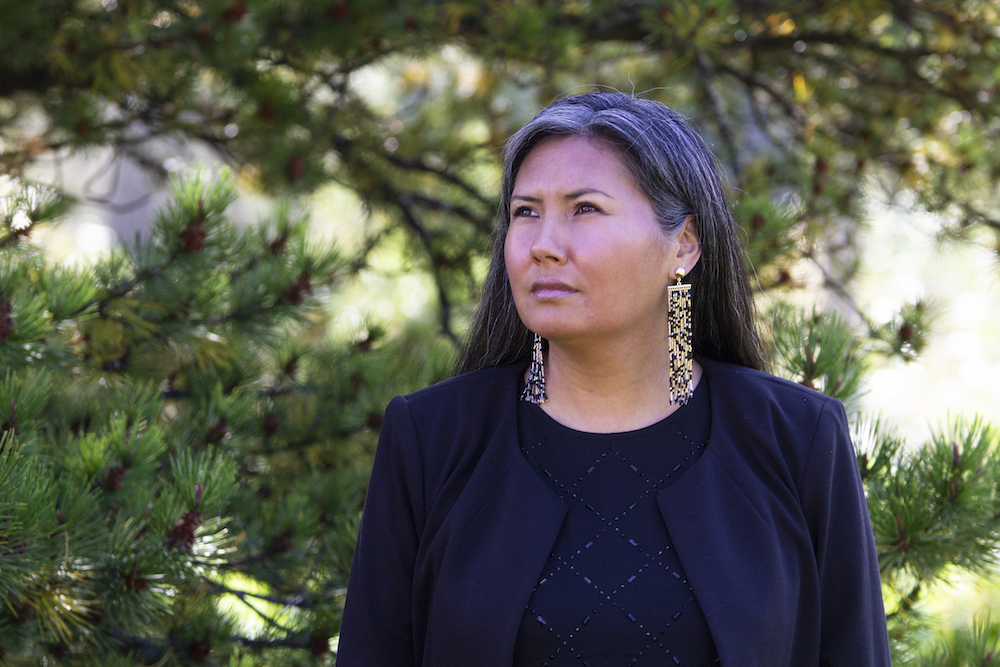
“Our Elders remember a time when there were thousands upon thousands of caribou. Our people lived off the land at one point, and they relied on caribou. They relied on moose, they relied on deer, they relied on a lot of four-legged creatures to help them survive,” Owens says.
“There’s always been this relationship that the Natives have to the land, and we respect all the wildlife because they’re providing us food, clothing, tools.”
The Klinse-Za herd’s troubles began in the late 1960s when BC Hydro’s flooding of the Williston Reservoir blocked the caribou’s migration route.
“The Elders noticed immediately that the large herds were not coming through anymore,” West Moberly First Nations Chief Roland Willson says. “They flooded in ’68, and the Elders had talked to the community about not hunting the caribou anymore until they started to come back. The West Moberly First Nations haven’t been hunting caribou since that time.” Most members have never tasted caribou, a staple of their traditional diet, he says.
But Williston Reservoir brought another disruption. Local power production introduced by the W.A.C. Bennett Dam encouraged an influx of industry. Mining, logging and seismic exploration fractured the landscape and divided what were once large, intermingling herds into smaller, isolated ones.
The shy and gangly caribou have one superpower: the ability to exist in barren landscapes that predators avoid. Deep snow and forest cover provide a refuge for the leggy creatures. But clear-cut logging has left caribou exposed, and forestry roads provide easy travel corridors for wolves. The invitation extended to predators by a single snowmobile track could spell disaster for a small herd.
In 2003, the federal government listed woodland caribou as “threatened” under the Species at Risk Act, a designation that obligates provinces to implement a recovery plan. B.C.’s first provincewide program to manage declining caribou was announced a few years ago.
In 2009, West Moberly First Nations took the province to court over continued mining exploration in the Burnt Pine herd’s habitat, which it said violated its treaty right to hunt caribou. In 2011, the B.C. Supreme Court agreed, though it was too late to benefit the herd — shortly after the decision, its last remaining member fell into a pit created by the mining company and died.
“This is Treaty 8 territory. They have a constitutional obligation to ensure that our treaty rights aren’t being infringed. Our treaty rights on hunting caribou were infringed from the 1970s,” Willson says.
Until then, West Moberly had been relying on the province’s data to understand caribou numbers and believed the Klinse-Za herd was stable at about 200 animals. Around 2010 it became clear that the population had dwindled to 50 and was on a steady decline, reaching 16 individuals in 2013. At the same time, the nation began working with Scott McNay of Wildlife Infometrics to develop its own recovery strategy, including an enclosure to protect calving females.
The strategy was embraced by the neighbouring Saulteau First Nation, beginning a collaboration between the nations. The province initially declined to participate, Willson says.
Maternal penning began in 2013 with the late-winter capture of female caribou. The pregnant females gave birth in the pen and were released several months later with their young.
The program added a dozen calves to the herd the first year, nearly doubling its size. After continued success, by the third year the province was on board. “That’s transferred into the partnership agreement that we have with Saulteau, B.C. and Canada,” Willson says.
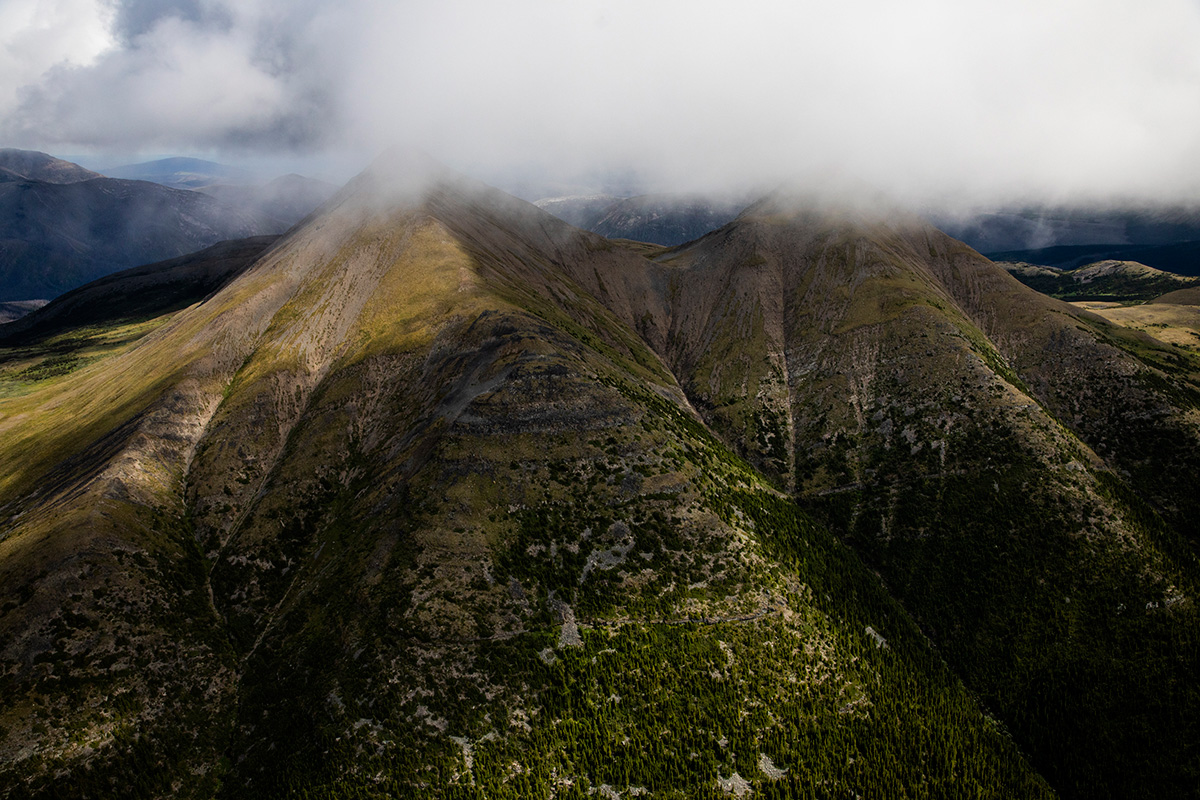
The agreement took three years to negotiate and presents a phased approach to creating “a net-neutral or positive effect on caribou habitat in the area.” It covers more than 7,000 square kilometres divided into seven zones with varying degrees of protection.
Included in the agreement is the expansion of the existing 2,689-hectare Klin-se-Za Provincial Park more than tenfold, adding 30,800 hectares of Indigenous Protected Area. The expanded park, which will be formally established this spring, includes the Twin Sisters (Klinse-Za) mountain, which are sacred to Indigenous groups.
In August, one week before this year’s caribou were released, Ken Cameron, former chief of the Saulteau First Nation, stood in front of Twin Sisters mountain and spoke to the agreement’s significance.
“I think it’s such a powerful thing that Canada, B.C. and the two nations — West Moberly and Saulteau — got together and came up with this agreement,” he says. “I truly feel that it’s a special place and all these things that happened were for a reason.”
Klin-se-Za Provincial Park was one of nearly two dozen protected areas established in the Peace region between 1999 and 2001 under the NDP government. Since the Liberals took power in June 2001, the region has seen one new protected area — Nation Lakes Provincial Park, located nearly 200 kilometres west of Klin-se-Za, in 2004 — in addition to the 268-hectare expansion of Monkman Provincial Park, 150 kilometres to the south, in 2018.
According to Global Forest Watch, about 4.2 per cent of the Peace region’s land base is protected, well below the provincial average of 15 per cent. Klin-se-Za’s expansion brings that number up to 6.7 per cent, Burkhart of Yellowstone to Yukon says.
Burkhart adds that the protection measures are a positive step toward caribou recovery.
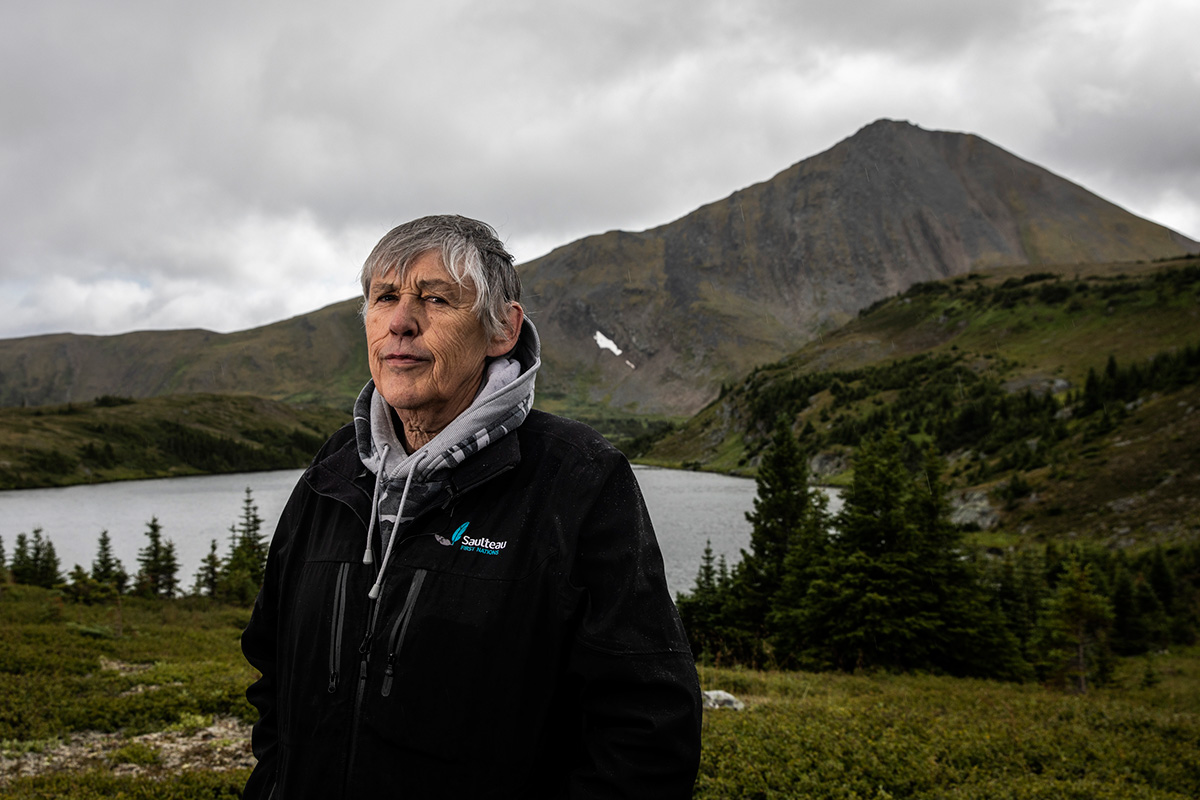
“West Moberly and Saulteau are running the world’s most successful caribou recovery project, period. And that is a testament to their tenacity at recovering an animal that was a critical food source for them in living memory,” he says. “Despair is pretty common in the conservation world right now and this is one of the few truly optimistic and hopeful stories.”
With more than 85 per cent of the Klinse-Za herd’s habitat now protected, it’s believed that the herd will make a full recovery. However, other herds in the region have less than 30 per cent habitat protection, making them far more likely to rely on emergency support measures, such as predator control.
“Without the holistic approach and large landscape conservation measures, I’m not as confident that they’ll survive. Similarly, with other southern mountain caribou populations, unless similar measures are taken and agreements are made with the First Nations that are determined to recover caribou, we’ll see more and more herds disappear like the South Selkirks did,” Burkhart says.
He adds that centring Indigenous leadership in recovery efforts is the best model for saving caribou.
Carmen Richter is a Saulteau First Nation band member and a biologist working with the nation on habitat restoration. She says what restoration looks like is very different in the eyes of a consultant versus a member.
“Restoration means more than just enjoying a park on the weekend for people here. It’s protecting our grocery store, our pharmacy, our church, our way of life for our kids and our health for our kids. In order for our children to be healthy, they have to go back and know about our traditional way of life,” she says.
Incorporating Indigenous knowledge allows biologists to restore the landscape to what it was prior to industrial impacts, rather than what they envision it to be. “I may not know that was a perfect moose lick area, because it’s decimated and there’s a well site there. We need to go to our Elders and ask them,” she says.
Doug Donaldson, minister of Forests, Lands, Natural Resource Operations and Rural Development, says bringing greater Traditional Ecological Knowledge into wildlife management is part of a broader approach being implemented by the province. He adds that the goals of February’s agreement mesh nicely with the Together for Wildlife strategy announced last month.
“We as a government aren’t going to go ahead with any wildlife management strategies unless First Nations are a part of it,” Donaldson says. “No longer are the days when the B.C. government presents a management plan after it’s been completed to a First Nation and says, ‘What do you think of this?’”
The agreement was partly signed in an effort to pre-empt the federal government implementing its own conservation measures under the Species at Risk Act. On the same day, the province also signed a bilateral conservation agreement with the federal government providing a framework for supporting 21 other southern mountain caribou herds in the province.
Included in the agreement is a section addressing the racist backlash from those fearing job losses. Willson says Indigenous communities have unfairly become a target for forestry’s long-standing decline.
“The caribou thing happened and then [forestry companies] were able to divert people’s attention to the caribou and take the pressure off of them for mismanagement of the forests,” he says.
While Donaldson acknowledges “a high level of concern in the local communities” that rely on forestry and other resource extraction, he says the forest industry’s claims that 500 jobs would be lost were overblown.
“There’s been a lot of misinformation on the impacts of the agreement. Our ministry staff have worked with the forest sector on the impacts of the protected area that’s set out in the agreement and, collectively, we’ve agreed that the impact is about 280,000 cubic metres [of timber],” he says.
He adds that the province negotiated a $40-million financial package with the federal government for impacted tenure holders and $10 million for communities and potentially impacted workers.
Local representatives for West Fraser and Canfor did not respond to The Tyee’s request for comment.
Willson hopes that habitat restoration measures outlined in the agreement will initiate a cycle that brings landscapes back to their pre-impact state, creating jobs every step of the way.
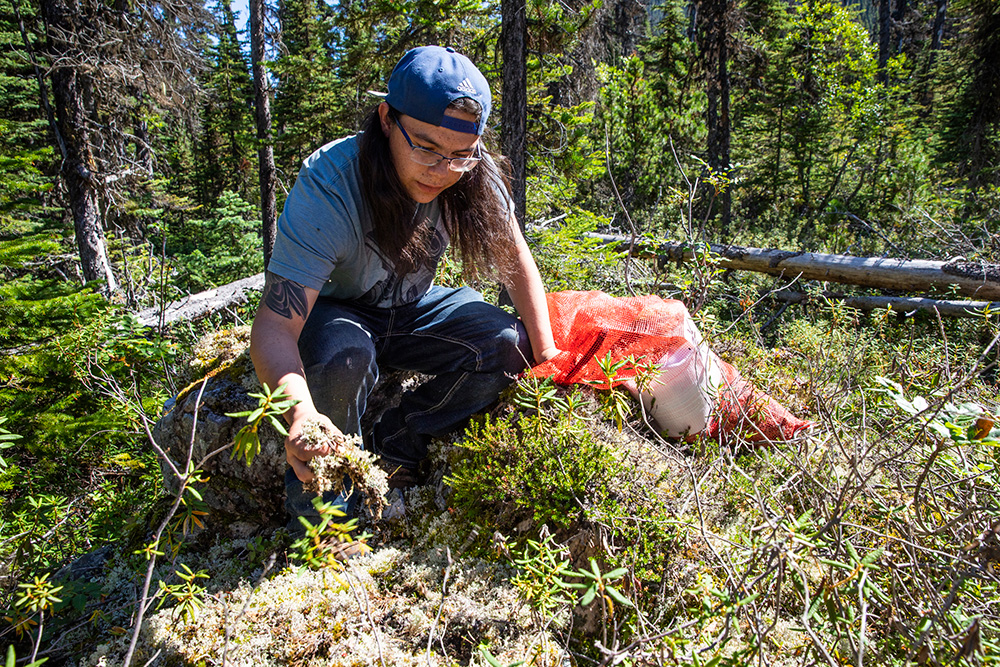
Twin Sisters Native Plants Nursery, which has been collecting seeds and growing indigenous plants for the Saulteau and West Moberly First Nations since 2012, could play an integral role in improving reclamation and restoration work in the area: “Through our use of native plants we can ensure the long-term ecological health of British Columbia through the restoration of disturbed landscapes,” its website says.
Clayton Lamb is a postdoctoral fellow who has been working with West Moberly and Saulteau First Nations on the caribou recovery since December. He says one of the exciting things about the partnership agreement is that it provides funding for habitat restoration.
“The ultimate goal here is to recover to a point that they could enact a culturally meaningful harvest of caribou like they once had,” he says.
By Willson’s calculations, the herd would need to number in the thousands and be self-sustaining for that to happen.
Also initiated in the plan is an Indigenous guardian program that tasks Saulteau and West Moberly members with patrolling the caribou pen — located about 100 kilometres into the bush from Hudson’s Hope — on two-week rotations. The penning program is supported by community members who spend hours on hands and knees collecting the hundreds of bags of lichen needed to feed the animals during calving season.
Last month, some of that lichen was used to entice this year’s caribou from their maternal pen. Burkhart was there as the elusive animals approached the gate.
“About 14 of them came to the opening, and the lead cow was a little apprehensive and kept turning back,” he remembers. “Finally, one of the calves was like, ‘No, I’m into this. This is great,’ so went storming out. One of his little friends followed, and then they sort of started trickling out after that.”
Over several hours, the caribou — including eight new calves — headed into the alpine, where they will disperse for the winter season. Once in the alpine they are relatively safe. But it doesn’t take much to wipe out a herd, even as numbers exceed 100 animals.
“The scary, precarious piece here is that’s still a very small population. One big predation event, one avalanche, can knock out a big chunk of that herd,” Burkhart says. “They’ve got to get up to a higher baseline so that they can be self-sustaining.”
Saulteau and West Moberly are committed for the long haul.
“We’re kind of saving ourselves,” Willson says. “What happens to the caribou happens to us.”
With files from David Moskowitz. ![]()
Read more: Indigenous, Environment




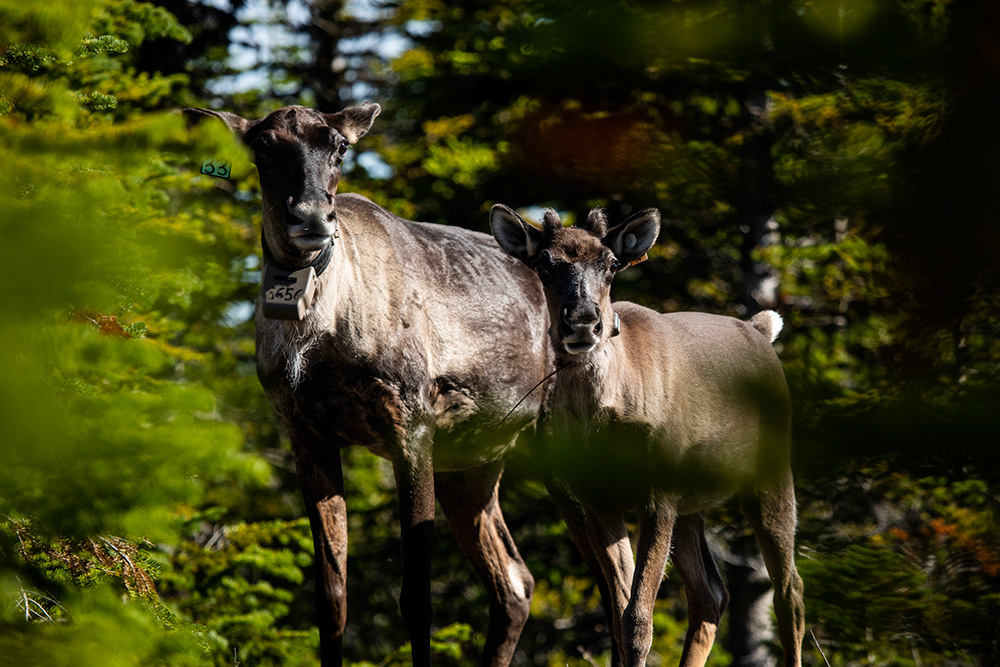












Tyee Commenting Guidelines
Comments that violate guidelines risk being deleted, and violations may result in a temporary or permanent user ban. Maintain the spirit of good conversation to stay in the discussion.
*Please note The Tyee is not a forum for spreading misinformation about COVID-19, denying its existence or minimizing its risk to public health.
Do:
Do not: